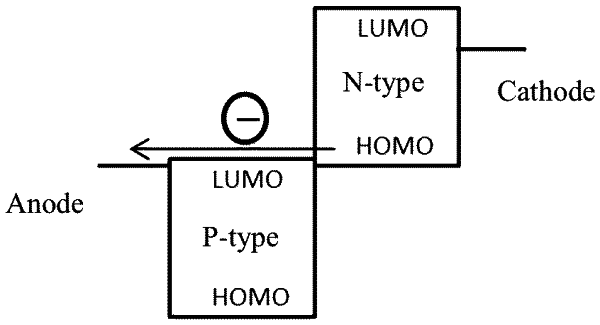| CPC H10K 50/11 (2023.02) [H10K 50/16 (2023.02); H10K 50/81 (2023.02); H10K 50/82 (2023.02); H10K 2101/40 (2023.02)] | 19 Claims |

|
1. An organic electroluminescent device comprising:
a cathode;
an anode;
an N-type organic semiconductor between the cathode and the anode; and
a P-type organic semiconductor between the N-type organic semiconductor and the anode and in contact with the N-type organic semiconductor,
wherein the P-type organic semiconductor has a LUMO energy level between a LUMO energy level and a HOMO energy level of the N-type organic semiconductor, and an energy level difference between the LUMO energy level of the N-type organic semiconductor and the LUMO energy level of the P-type organic semiconductor corresponds to an electron transition luminescence spectral range in a wavelength range between near-infrared to ultraviolet,
wherein the LUMO energy level of the N-type organic semiconductor is higher than the LUMO energy level of the P-type organic semiconductor by 1.6 eV or more.
|